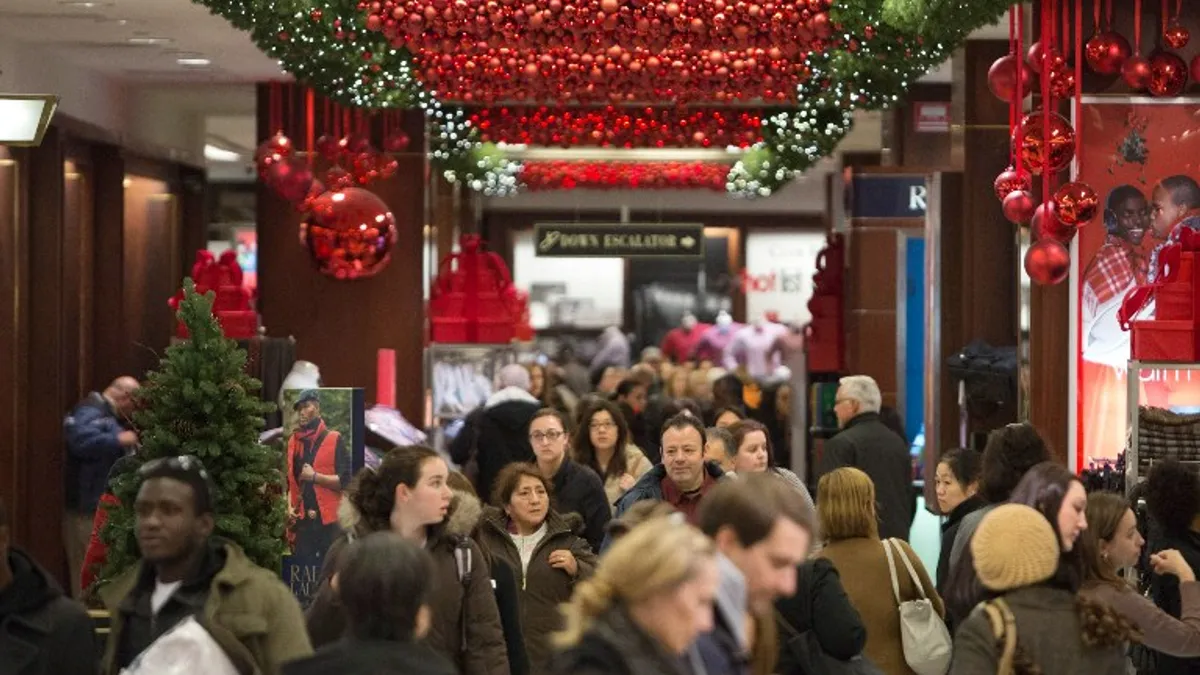Dive Brief:
- With consumer spending weakening and inventory at “peak levels,” Cowen analysts said in a Monday research note that they anticipate risks to the industry’s holiday sales projections and plans.
- The analysts also noted that competition is increasing for consumer acquisition and wallet share.
- All of this is happening while retailers face their own inflation in costs for labor and rent, the analysts point out.
Dive Insight:
The retail industry is riding a wave of volatility as it heads into the holiday season. Interest rates are up, consumer debt is up, discretionary spending is down and many consumers as well retail executives anticipate a recession ahead.
Nearly all the gloom can be traced back, directly or indirectly, to inflation, which has been exacerbated by high energy prices and global events, and will likely shape the holidays.
It’s a stark departure from last year’s holiday season, when consumers seemed flush with cash and employment had rebounded from terrifying drop-offs early in the pandemic.
Holiday sales soared in 2021, and margins for many retailers remained strong, helped along by the scarce inventory environment (and perceptions of such) created by widespread supply chain backups.
But with steep spikes to fuel and food this year, consumers are playing defense going into the holidays. According to Bankrate, 84% of holiday shoppers plan to somehow reduce the cost of their purchases. AlixPartners found that 30% of surveyed consumers plan to spend less this year, 39% plan to buy at least half their purchases on sale, and 40% plan to buy more affordable brands.
AlixPartner’s projections of 4% to 7% growth in holiday sales overall, would actually be a decrease when the inflation rate is taken into account.
According to Cowen survey research, consumers plan to spend a smaller share of their wallets on social events, travel and apparel, all three of which could have an indirect or direct impact on retail.
Meanwhile, there are “record high” levels of inventory in the consumer sector, the analysts also noted, arguing that margin expectations going into 2023 are too high as markdowns, storage and other pressures will likely weigh on profits.
The analysts did, however, point to a silver lining in the declining costs of freight, fuel and some inputs like cotton, which are falling due to declining demand from a consumer under pressure.













